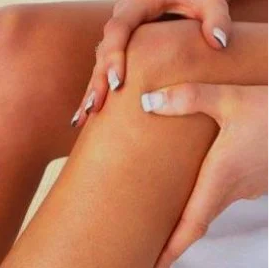
Knee pain is a common symptom of the disease in the body of your question about the formation of a signal joint, or just the increased load on foot.
Hard to find a man is experiencing pain in the knee during a specific period of life. Discomfort, clicks, or pain occurs in children and in adults because of a different density is the most important reason knee joint pain. A great man that will be a higher probability, which is the first symptom of different diseases, pain knee. Because of this behavior, of age features: - foreign exchange transactions the slowdown of the body, wear out cartilage, joints, process, and other issues with NOV-the skeletal system, blood vessels, nerves.
Because of the complex anatomical structure, excellent structure and significant loads and frequent congestion, is very sensitive knee joints. Any damage to the structure of matter, for example, the synovial bag, which leads to the violation of motor function of the knee, and, accordingly, pain syndrome. They repaired a meniscus ligament and is regarded as being the most vulnerable and 80-85% condition.
Anatomical structure of the knee
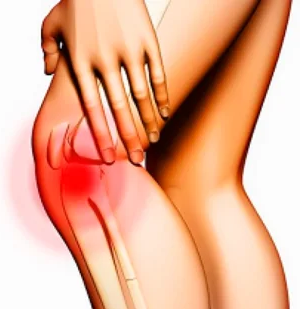
The result of the knee, knee joint, distal femur, and the two lamps under lamps, tubular bone of the tibia, Nov, nerve, vascular, and connective apparatus, the patella (patella), meniscal and joint bags.
Knee joint – major joints of the body. From above him a proper thigh. Joint surface of the lateral (outside) and medial (inner) tibial and patellar bone articulate with the lamp. Connective tissue meniscus cartilage as a shock absorber to a joint task that they represent. Tibia plateau weight distribution increases stability and rational person's joint thanks to them. Thin, double-headed, Paliperidone, and other Nov synchronizes the capsule-ligament structure, by providing the knee joint motor activity.
Many vineyards knee interconnected items. Cruciate ligament in the Joint, two – front and back. Bedirhan connected podmoshensky bone, bones, fibula and tibia collateral ligament. Oblique popliteal bunch on your stay in rear, bursa knee replacement. The main features of the joint spaces, such as a series – not with the synovial joint capsule communication. Veining is done thanks to the blood elements and the knee of nerves – nerve fibers.
Knee pain causes and
There are many reasons for pain, joint, knee, which can be divided into several groups.
Traumatic lesions items says:
- Injury to the knee. The result is the result of rupture of the vessels, local bleeding, soft tissue, joint,. Redness, swelling, lesions nerve endings leads to pain, difficulty moving.
- A full or partial rupture of the ligament. It is diagnosed more often violate the integrity of the part, the internal lateral ligament of the extreme version of the tibia outward.
If you lose tooth bonding, compared with less drink. A strong deviation from this behavior in the lower leg, foot exposure. A bond inevitably to accompany hemarthrosis cross the gap.
Full a space, are joined by both bond damage, joint bags, inner meniscus tear. Extreme mobility with the knee joint results in an injury such that the intensity of pain depends on the extent to which strong ending.
- Knee Hemarthrosis – blood in joint cavity rupture. Sometimes traumatic and non-traumatic character. Traumatic hemarthrosis meniscus may occur at line breaks, line breaks Bond full or partial intra-articular fractures, bruises knee. Non-traumatic symptoms, a disease characterized by increased fragility of vascular walls is one of the options for infringement, or the blood clotting system. These hemophilia, skorbut, severe hemorrhagic diatez. The owner of the House accumulated blood compresses the joint cavity tissue by disrupting blood circulation in them. Special pigment – hemosiderin bond adverse effects, yellow cartilage, synovial bags, leading to loss of elasticity. A result of the lesion of joint, Bursa, swelling of villi and strengthened her joint fluid production. The result would be joint recurrent bleeding dystrophy and destruction.
- The miniscope knee – meniscus violating the integrity of the knee joint. During lateral meniscus in a manner that outer damage, a medical – internal. This is most often difficult, but damage to the knee joint was diagnosed. Risk-like illness, with intensive training not just athletes, but also ordinary people. A meniscal tear that may occur when unusual motion rotating in a sharp, body, legs exposure, a strong impact and knee.
- Patellar dislocation – patella pathological offset. Most trauma diagnosis 0,7% of cases the total buckling. Thanks more often at dislocations consists of external, internal, very rarely vertical or torsion. Missing lateral dislocation of the patella is not defined (external) oil lamps, the full – open lateral oil lamp.
- Closed or open fractures of the knee joint, the upper phase or the lower section Beder what his tibia bone. This injury is often a soft tissue lesion of the knee, why, massive bleeding, excessive mobility of the knee in the area of deformation.
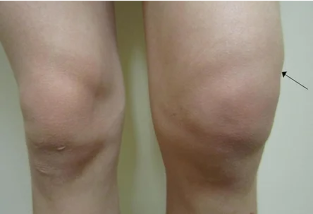
Inflammatory and degenerative-degenerative joint diseases of the elements says:
- Arthritis – inflammatory lesions, knee joint. A similar development mechanism observed pathology osteoarthritis, ankylosing spondylitis, rheumatoid arthritis, gout (urate in the joints of existence).
- Osteoarthritis (gonarthrosis) of the knee joint in defeat non-inflammatory degenerative changes that affect the nature of the facilities all construction and the result is severe.
- Bursitis inflammation of the synovial bourse leads to pain during stretching-extensor movements of the knee.
- The shoulder tendon of the knee joint capsule inflammation of crow's feet, knees, tendons and ligaments surrounding the joint and Nov. This is the result of pain, especially during landing, down the stairs, especially with a heavy load, and the inner surface of the knee focusing.
- This chondropathie patella – degenerative-necrotic changes of the articular cartilage (rear) patellar surface. The degree of destruction may be different: the land is full up a slight softening of cracks and wear.
- Chondromatose dysplastic islet cell antibodies associated with rebirth because of serious chronic illness, the process plots the articular cartilage membrane shell – I'm Gondro. Possible ossification of cartilage separate wire
- A baker's cyst, popliteal Fossa tumor formation on the patella on the opposite side of the tight elastic round education. The cyst is clearly visible in the flattened condition of the knee. Causing discomfort, pain popliteal region. Important the size, compresses blood vessels and nerves, that is, violated, innervation and blood circulation.
- Hoff disease – disease, accompanied by the defeat and rebirth of in the fatty tissue around the knee joint. Bead, swelling and other damaged fat cells, adipocytes – ends, spare them a thick, fibrous cloth. As a result, the buffer function of a "fat pad" is broken, the role of adipose tissue itself is not capable of being the shock absorber.
- Disease Osgood–Schlatter – pathology in necrosis is characterized by hummocky part of the tibia. Diagnosed adolescents: at the age of 10 to 18 involved in sports. Visible a painful lump below the patella, if left untreated, why limit movement or full leg immobilized, as well as malnutrition Nov.
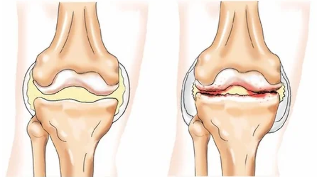
Disease, which is the irradiation possible knee pain:
- Koksartroz hip joint the hip joint is a chronic and progressive degeneration of dystrophic changes in conjunction with defeat there. Often the pain spreads, the outer surface of the hip or below the knee.
- Neuropathy of the sciatic nerve non – inflammatory nerve compression that resulted in the defeat spazmirovannah or tightening of blood vessels. This nerve in the lumbar region and the coccyx and pelvic in passing and starting on the foot. At any point in its path leads along a throbbing pain sensitivity or violate the blockade.
- Fibromyalgia – extra-articular soft tissue of the defeat of non-inflammatory character of fever as a symptom with a combination, Nov weakness, depression, etc.
Some systemic diseases, knee pain way:
- Osteoporosis a chronic progressive disease bone mineral composition and bone density that changed the course of the system. "No wash" calcium from the bones, which causes fragility. Sore or aching pain that accompany the process, in the extremities.
- Bone tuberculosis. Why do you always plot defeated bone Tb strong headaches.
- Osteomyelitis infectious inflammatory bone disease that affect all structural elements and character. As a result, specific, eg, tuberculosis, and nonspecific, usually Coca, causes osteomyelitis, skin hyperemia, edema, local pain, bone and Nov acute, febrile temperature.
- Some infectious diseases. In the process of becoming involved in Reiter's syndrome, genital tract and the mucous membranes, eyes, joints that are affected. Lyme disease symptoms someone with a artralgia.
Any pain knee
Depending of weather and meteorology, the intensity of the pain may be different.
- Nagging. Arthritis, osteoarthritis.
- Acute, strong. Items rupture a broken knee, ligament, from time to time through bursa, knee injury, acute miniscope deforming osteoarthritis.
- Throbbing. While working deforming osteoarthritis, meniscus injury.
- Drill. A osteomyelitis.
- Mat. When bursa Ayse chronic Legg.
- Burning. The sciatic nerve compression of tuberculosis process in the membrane.
- Shooting. Impingement of a nerve trunk.
- Walking pain. When Baker cyst, okan bursa, arthritis, osteoarthritis gon, a healthy rotator cuff is in many directions.
- Pain at rest. Gout, arthritis.
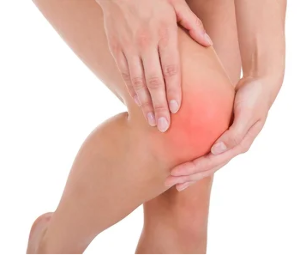
Diagnostic pathology causing knee pain
Fizikalna examination:
- stories and complaints;
- including visual inspection, palpation with the knee.
Laboratory studies:
- biochemical and clinical blood tests;
- a serological study of blood;
- the experiment, a blood count;
- Examples of Rheumatology;
- Bacteriological Analysis of synovial fluid.
Invasive instrumental methods:
- arthroscopy;
- joint puncture bag;
- puncture biopsy of the bone.
A non-invasive diagnosis team:
- radiography of the knee joint;
- densitometry;
- joint ultrasonography;
- SA or MRI scan.
Knee pain treatment
Both knees the pain, or non-traumatic nature reveals, then first you need to ask a therapist, A, according to patient complaints, and the results of an objective examination which will lead a narrow specialist and podiatrist, rheumatologist, or neurologist into account. Any knee injury or trauma you should see your doctor-podiatrist.
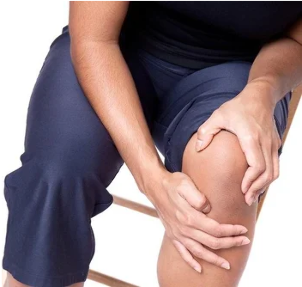
The treatment in each case is different, depends on the cause of the pain, so some kind of injury or illness. Each scheme has its own treatment for illness. But for a start, the patient has to follow some general rules:
- greatly shorten the time hiking and it was found, where on their feet throughout the day;
- athletes temporarily (till) to give up exercise, jogging or jumping and ordinary people;
- movements pain increased completely give up, one knee bandage elastic bandage fixing on top;
- still with a bandage or wrap to wear knee joint;
- an injury, the traumatic effect in a cold place.
Rheumatoid psoriatic arthritis, a serious systemic autoimmune diseases in need of complex treatment for many months. The basic treatment occurs thanks to immunosuppressive drugs, non-steroidal anti-inflammatory and hormonal drugs, drugs, gold, etc.
Used to treat bursitis, pain relievers and anti-inflammatory drugs. If found, the infection a course of antibiotics. Puncture the bag treatment to remove the excessive synovial fluid quality and/or that identifies a corticosteroid. Bursa helps to get rid of the chronic inflammation surgery – surgical excision synovial handbags.
A deforming osteoarthritis effective intro-articular injections of corticosteroids, NSAIDS, prolonged and chondroprotectors. To relieve pain syndrome, tropical bischofit to compress with a prescription or with dimexide, ointments and gels, anti-inflammatory action. It helps to massage, physiotherapy, therapeutic exercises. Surgical intervention requires a heavy defeat knee replacement – total joint.
While taking the course lies in the treatment of osteoporosis, bisphosphonate, fetus, drugs, calcium, vitamin D, etc.
The meniscus tear treatment may be conservative or surgical. Conservative treatment occurs through the use of analgesics, NSAIDS, hyaluronic acid, chondroprotectors. But first produce reposition the joint.
Any surgical intervention:
- meniskektomia;
- partial (partial) meniskektomia;
- meniscal transplantation;
- arthroscopy;
- a meniscal tear arthroscopic stapling.
Rehabilitation is very important after any injury of the knee there will be a period of rehabilitation or treatment under the control of an orthopedic specialist. Optimum joint function point of the physician's recovery program. The main methods post-operative rehabilitation is considered massage and gymnastics. Effective lesson special simulators, which develops slowly as the knee joint.












































